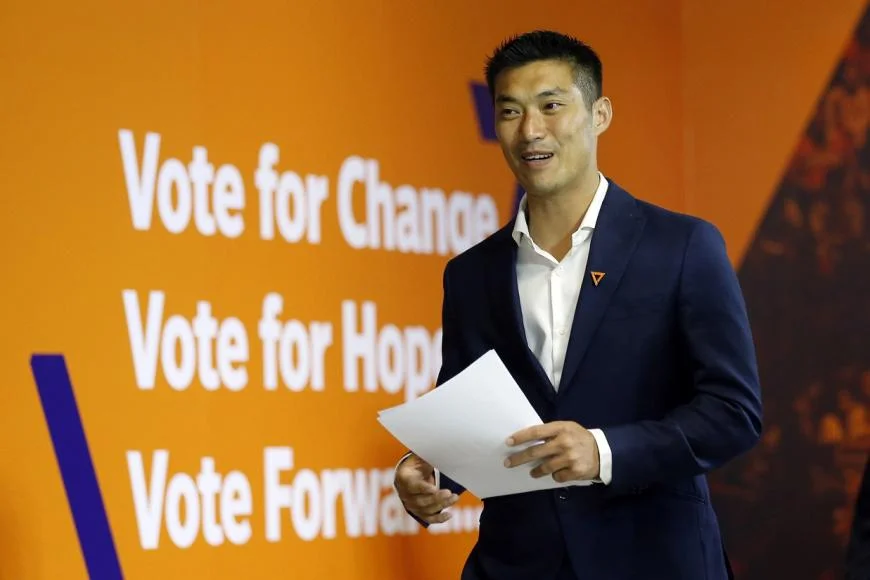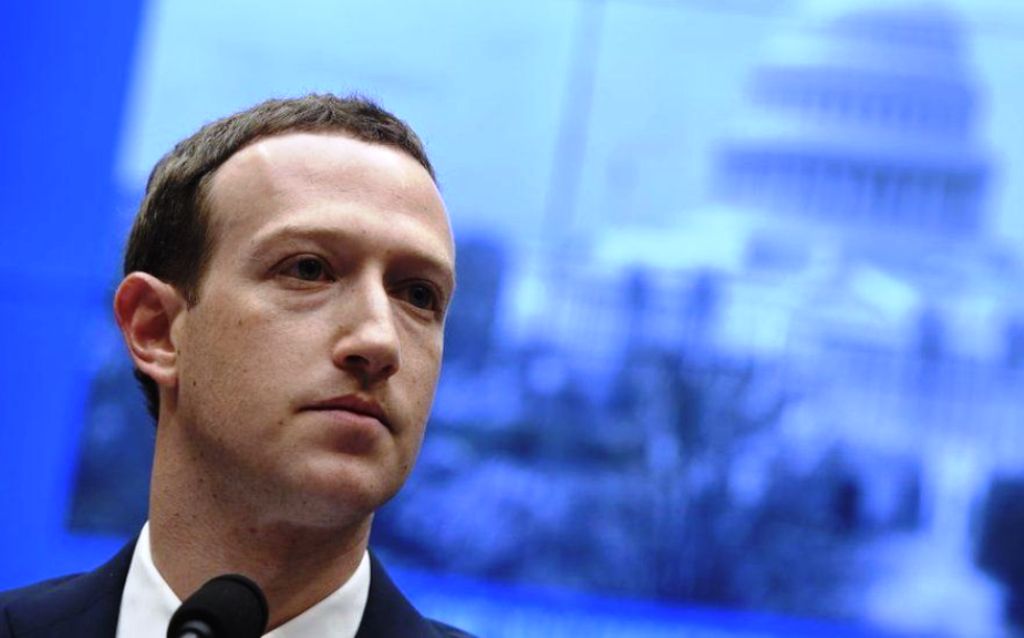News
Mainstream Media Bias Against Trump Persists Six Months Into Second Term
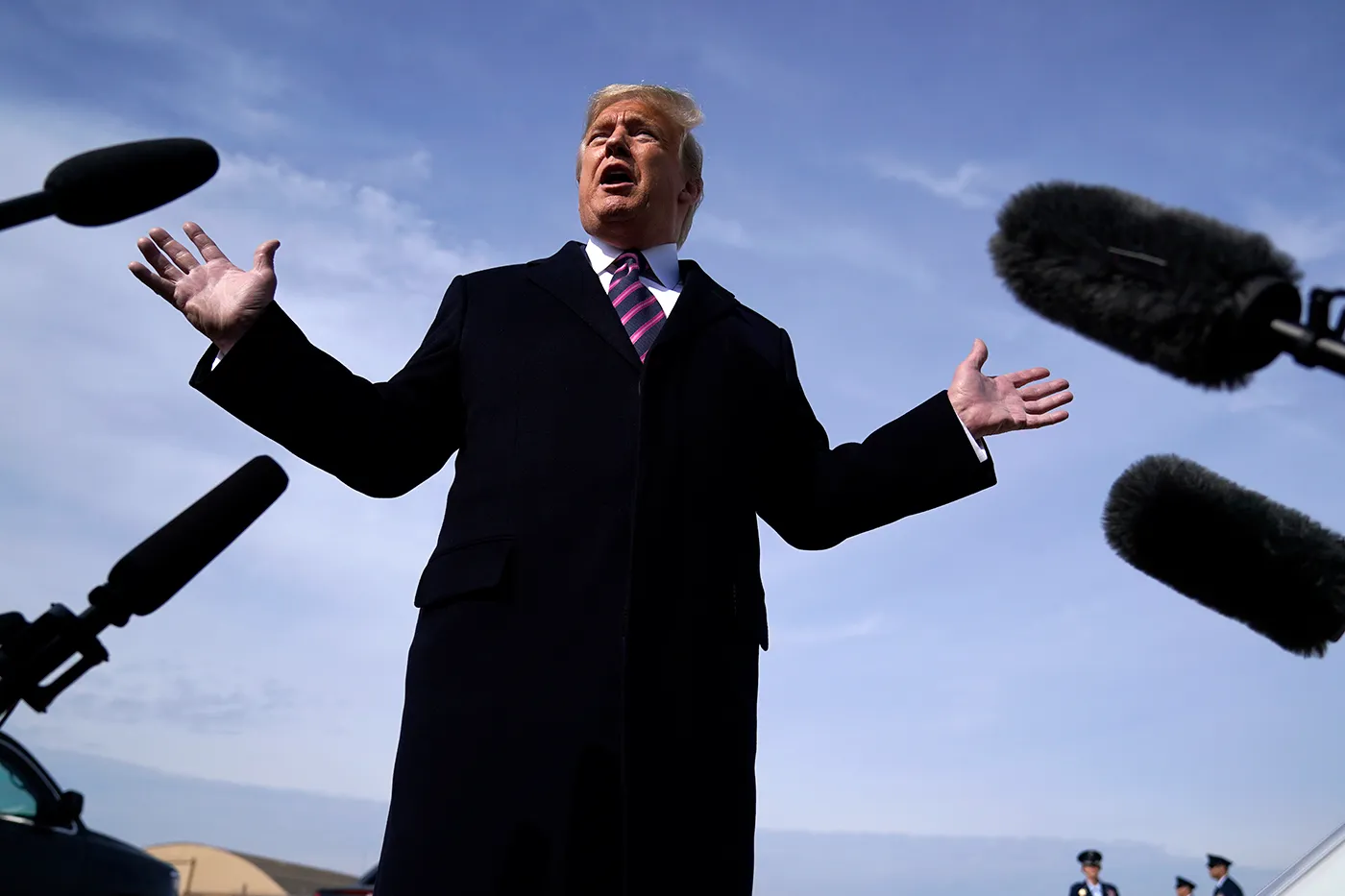
WASHINGTON, D.C. – Six months in on President Donald J. Trump’s second term, US media giants—major newspapers, TV channels and big-name digital sites—largely continue to dismiss the government’s milestones, while spotlighting stories that put the president in a poor light.
This stance, which shows a clear dislike for Trump, has deepened public skepticism about established journalism. Many blame this on years of reporting they see as misleading, from persistent negative coverage to reporting on stories like the Russia investigation that were later challenged.
As a result, growing numbers of Americans have shifted towards non-traditional sources, searching for views they see as less filtered and closer to reality. This article looks at ongoing patterns in media coverage of Trump, what this means for public trust, and how people now get their news.
Downplaying Trump’s Record
Since January 2025, President Trump’s supporters say his government has achieved big policy wins. His team points to new executive orders that cut federal red tape, moves to make the US more energy independent through homegrown production and stricter immigration rules to boost border security.
The White House also highlights early economic growth, with the Dow Jones rising by 8 percent in six months and minority unemployment falling to record lows, based on Labour Department reports.
Despite these points, long-established outlets like The New York Times, The Washington Post and CNN tend to frame these steps as minor or owed to outside forces beyond Trump’s control.
A June 2025 feature in the New York Times, for example, mainly credited worldwide market shifts for the stock market gains, barely mentioning federal deregulation. CNN’s reports on immigration changes often centre on humanitarian worries, providing little focus on figures from US Customs and Border Protection that show a 30 percent drop in illegal crossings since January.
This tendency is not new. Back in Trump’s first presidency, a 2017 study by the Shorenstein Center found that leading newsrooms like CNN and the Times delivered 80 percent negative coverage, even for headlines about tax changes or new jobs.
The same scene continues in 2025. A Media Research Center review in April 2025 pointed out that ABC, CBS and NBC’s main evening bulletins covered Trump’s policy successes in just 12 percent of stories, compared with nearly 70 percent focused on controversies, many told without full context.
A History of Hostility
Many believe the ongoing approach isn’t just about tough questioning—it often feels personal, even driven by strong opposition to Trump’s ideas and style. Trump’s spats with the press, including calling them “the enemy of the people”, have fuelled this cycle of distrust.
Outlets like The Washington Post and MSNBC have adopted the role of protectors of democracy, frequently portraying Trump as a risk to key American systems. Critics say this has come at the cost of balanced reporting.
One standout example in February 2025 was when CBS’s 60 Minutes showed an interview with Vice President Kamala Harris that Trump supporters claimed was cut to cast him negatively. This led to the FCC, run by Chairman Brendan Carr, demanding that all the footage be released.
Trump then sued CBS’s parent company, Paramount, for defamation. That case ended in a $16 million settlement, but Senator Elizabeth Warren called it “bribery in plain sight”, raising concerns about whether media giants can remain independent when facing heavy legal or financial threats.
This isn’t a one-off. The president’s dramatic language continues to provoke sharp answers from journalists. In July 2025, a New York Times columnist called Trump’s White House a “proto-fascist regime”, a claim many saw as over the top.
Critics argue this shows a deeper problem inside major newsrooms, where similar viewpoints drown out other voices. A 2023 Media Matters report admitted the media’s “both sides” model did not always question Trump enough, but conservatives say that coverage of him was still far tougher than for his Democratic opponents.
Shadows of the Russia Collusion Hoax
Few stories have hurt trust in mainstream outlets more than the reporting on alleged Russian ties to Trump’s 2016 campaign. From 2016 to 2019, these claims made the headlines almost daily. But after Robert Mueller’s 2019 report found no evidence of conspiracy, the Columbia Journalism Review criticized the “wall-to-wall” coverage. Many Americans felt let down and said they had been misled.
That fallout remains. By 2024, a Gallup poll showed only 31 percent of people trusted the news a “great deal” or “fair amount”, down sharply from 54 percent in 1999. Among Republicans, it dropped to only 12 percent, with many blaming the handling of the Russia reporting as the reason they lost faith. Few big outlets retracted or apologized for their coverage, further eroding trust.
That history set a tone for what critics call “speculative journalism”—where stories guess motivations without clear proof. This pattern has carried into 2025. For example, a Washington Post story in March suggested Trump’s push for less central energy regulation might be based on his money interests, though the piece relied on vague sources. Such reporting, echoing the style of the Russia saga, leaves many readers doubtful about what they read.
Awards and the “Fake News” Label
The crisis of confidence in the media deepened after major awards were handed out for stories that later proved inaccurate or were sharply disputed. The New York Times and The Washington Post were both given Pulitzers for their Russia investigation coverage—despite the outcome of the probe. Trump and others now point to these wins as proof that the media praises work that matches their preferred version of events, not what checks out.
The feeling stays strong in 2025. In May, a New York Times journalist won a Pulitzer for a big piece on Trump’s business deals, but conservative media slammed it as “fake news” due to reliance on unnamed sources.
Trump blasted the award online, calling it “a disgrace to journalism,” and said he will sue for defamation. That case is still working through the courts, but it highlights widening divides between traditional media and a public more and more skeptical of their goals.
Taking the Fight to Court
Trump’s answer to critical coverage has been to use the courts. Since re-entering office, his team has brought multiple legal cases against leading newsrooms. Besides the CBS situation, in July, he filed a $10 billion lawsuit against The Wall Street Journal for a story claiming links between Trump and Jeffrey Epstein, a story Trump called “baseless” and “malicious.”
The same month, he sued the Des Moines Register and pollster Ann Selzer for fraud over polling results in Iowa, a state he easily won.
These lawsuits split opinion. Trump’s supporters see them as much-needed pushback against a media corps they view as dishonest. Some lawyers raise alarms that such tactics could undermine free press rights.
The Committee to Protect Journalists warned as far back as 2020 that Trump’s threats and lawsuits could inspire more authoritarian governments to clamp down on the press elsewhere. But many Trump supporters believe this is simply holding the media to account after years of losing trust.
Turning to Independent Sources
With confidence in traditional news sinking, more Americans now choose independent outlets and social platforms instead. X, Substack and YouTube offer space for writers, podcasters and commentators who sidestep corporate editors.
A Pew Research Center study in 2024 found that 62 percent of Americans now get some news from social networks, with X among the most popular for politics. Public statements from figures like Elon Musk, who owns X, have reflected and encouraged this ongoing switch, as he wrote in 2024: “You are the media now.”
Sites like The Daily Wire, The Blaze and a surge of Substack newsletters have all grown their audiences, especially among conservatives unhappy with the mainstream. Podcasts by hosts such as Joe Rogan and Ben Shapiro are leading the way; Trump’s appearance with Rogan in late 2024 brought over 50 million listeners to a single episode.
Listeners prefer these extended, candid formats over the clips and edits of traditional news, finding them more genuine.
But this move comes with its risks. Decentralized sources can let misinformation spread quickly, as seen during the spread of false claims about the 2024 election. Elon Musk’s choice to scrap fact-checking systems on X has sparked debate over whether free speech is taking precedence over accurate reporting. Despite worries, for many, the shift is about demanding facts without the filter of big news companies.
What This Means for Democracy
Losing belief in established newsrooms has a direct impact on US politics. A study from the Tow Center in 2021 showed that many conservatives feel shunned and blamed by mainstream outlets. In 2025, this sense of exclusion is sharper than ever, fuelling deeper splits as people seek out spaces that mirror their views. The inability of legacy news to acknowledge bias or connect meaningfully with Trump voters has only widened these gaps.
By treating Trump mostly as a villain and brushing aside his wins, media organizations may have made him more appealing to those already suspicious of elites. As noted in a 2024 Newsweek analysis, the press’s declining impact during the election made it easier for Trump to reach people directly using social media and popular podcasts.
If mainstream outlets want to win back trust, they may need to make big changes. This could mean being more open about their process, striving for balance, and owning up to past missteps, such as the Russia investigation.
Some suggest letting more voices in through partnerships with independent journalists or community reporters. Others call for a stronger commitment to clear, fact-based writing, steering clear of guesswork and sensational storytelling.
But these ideas aren’t easy to put into action. Shrinking ad sales and fierce competition from new platforms have left many established newsrooms scrambling. Rapid growth in AI content and social platforms piles on even more pressure, with legacy media struggling to keep up. As President Trump’s second term continues, news companies face a clear test: adapt or risk fading further from view.
Related News:
Legacy Media Scrambles to Defend Obama as Gabbard Releases Declassified Files
News
Trump Targets Fentanyl While Democrats Shield Illegal Drug Dealers

WASHINGTON D.C. – In a move his team calls historic, President Donald J. Trump has signed an executive order that classifies illicit fentanyl and its key precursor chemicals as a Weapon of Mass Destruction (WMD).
The order was signed in the Oval Office during a ceremony that also honored border security officials with medals. The setting highlighted how central the fentanyl crisis has become to the administration’s security and immigration agenda.
“No bomb does what this is doing,” Trump said, claiming fentanyl kills between 200,000 and 300,000 Americans each year. “We are officially labeling fentanyl as a weapon of mass destruction, because that is exactly what it is.”
In the text of the executive order, illicit fentanyl is described as “closer to a chemical weapon than a narcotic.” Just two milligrams, about the size of 10 to 15 grains of table salt, can be fatal.
By using the WMD label, the administration wants to pull in America’s national security agencies and treat fentanyl more like a biological or nuclear threat than a street drug.
Some legal scholars and policy analysts question how much the label will change on-the-ground enforcement, since current laws already allow long prison terms for fentanyl trafficking. The White House insists the change is more than symbolic. Officials say it pushes the crisis into the top tier of security threats and warns that fentanyl could be used for “concentrated, large-scale terror attacks” by hostile actors.
What the Executive Order on Fentanyl Actually Does
The order directs a broad group of federal agencies to increase action against fentanyl and its supply networks:
- The Attorney General is instructed to ramp up investigations, prosecutions, and sentencing enhancements for fentanyl-related crimes.
- The Departments of State and Treasury are ordered to target and sanction banks, companies, and individuals tied to fentanyl production, finance, or distribution.
- The Department of Homeland Security is asked to apply WMD-focused intelligence tools to track smuggling routes and criminal networks.
- The Departments of Defense and Justice must review when and how military resources could be used in cases of extreme fentanyl-related emergencies.
The move builds on earlier decisions, including labeling major cartels as Foreign Terrorist Organizations, raising tariffs on China, Mexico, and Canada, and authorizing strikes on international drug-smuggling vessels.
The administration argues that fentanyl profits fund cartel violence, corrupt foreign institutions, and weaken U.S. security from within.
A Crisis Still Killing Tens of Thousands
Fentanyl remains the top cause of death for Americans between 18 and 45 years old. While overdose numbers have improved from earlier peaks, the damage is still severe.
After years above 100,000 total drug deaths annually, overdoses involving synthetic opioids, mainly fentanyl, fell in 2024 to an estimated 60,000 to 70,000 deaths. Even with this drop, the toll is staggering.
Provisional CDC data show that synthetic opioids like fentanyl are involved in roughly 70 percent of recent overdose deaths. The White House highlights long-term totals and points to several hundred thousand lives lost to fentanyl over the last decade.
Families who have lost loved ones to fentanyl have been visible at Trump’s events, sharing stories of sudden loss, counterfeit pills, and addiction fueled by cheap, powerful drugs.
How Fentanyl Reaches the United States
Most illicit fentanyl that ends up in the United States is cooked in Mexico by powerful cartels, especially the Sinaloa Cartel and Cartel Jalisco Nueva Generación (CJNG). These groups buy or receive precursor chemicals mainly from China and India, then synthesize fentanyl in clandestine labs.
Smugglers move the finished drug mostly through ports of entry on the southern border. It is often hidden in cars, trucks, or commercial shipments, and mixed into fake prescription pills or cut into other street drugs.
According to the DEA, Mexican transnational criminal organizations control much of the fentanyl supply chain, from chemical sourcing to wholesale distribution. The same groups are tied to kidnappings, extortion, and brutal violence across Mexico and beyond.
Trump has publicly pressured foreign governments, using tariffs and hints of military force, and has accused some rivals of allowing or encouraging the flow of fentanyl that kills Americans.
White House Strategy: Using Every Policy Tool
The WMD designation is part of a wider strategy that blends border enforcement, foreign policy, intelligence work, and criminal prosecutions.
The administration points to:
- Tougher border security measures and more resources at ports of entry
- Terrorist designations for major cartels
- The HALT Fentanyl Act, which permanently placed fentanyl-related substances in Schedule I
- Increased seizures of fentanyl at the border and inside the country
Officials argue that these steps, paired with local and state efforts, have played a role in reducing overdose numbers. They stress that fentanyl is not just a public health concern, but a threat that demands military, intelligence, and diplomatic tools.
Democrats Push Back on Trump’s Approach
Democratic lawmakers and many public health experts say the WMD label is more about politics than policy. Some legal experts describe the move as a “political exercise” that adds little, since fentanyl trafficking is already heavily punished.
Democrats and many treatment advocates prefer a focus on:
- Expanding addiction treatment
- Increasing access to medications like buprenorphine and methadone
- Supporting harm-reduction programs such as naloxone distribution
- Addressing mental health and the economic roots of substance use
These critics argue that enforcement alone will not solve the problem and that decades of harsh drug policies have not stopped addiction.
They also point out that the recent decline in overdose deaths is likely influenced by several factors, such as changing drug use patterns among younger people and shifts in the illegal drug supply, rather than enforcement alone.
Some warn that when law enforcement is shifted away from drug investigations to handle immigration tasks, it can weaken efforts to target traffickers and major supply networks.
Sanctuary Policies and the Fight Over Local Cooperation
Republicans in Congress and conservative commentators often connect fentanyl trafficking to immigration debates, especially in cities with “sanctuary” policies.
They argue that Democratic governors and mayors in sanctuary jurisdictions block federal immigration enforcement and, in doing so, shield criminal networks that traffic drugs.
In cities like Chicago, Denver, Boston, and New York, local policies limit cooperation with ICE detainers unless there is a criminal warrant or certain serious charges. These rules generally prevent local jails from holding people longer solely for immigration purposes.
House Oversight Committee hearings earlier this year put mayors from sanctuary cities under scrutiny. Republican members accused them of creating loopholes that let repeat offenders, including suspected traffickers, avoid deportation.
The mayors and their allies counter that:
- Sanctuary policies do not stop police from arresting or prosecuting criminals
- Local officers still honor court-approved warrants
- Community trust increases when residents do not fear immigration arrests for reporting crimes
- Research has often linked sanctuary policies with equal or lower crime rates compared to similar cities
Conservatives remain unconvinced and argue that defiance of federal immigration authorities gives cartels and gangs room to operate. Proposals to cut federal funds from jurisdictions that refuse to cooperate with ICE are still being debated in Congress.
A Defining Fight in Trump’s Second Term
Trump has framed the fentanyl crisis as one of the defining battles of his second term. His team says they are using “every available tool” against cartels, chemical suppliers, and financial middlemen who profit from the drug.
Supporters see the WMD designation as a long-overdue recognition of how deadly fentanyl has become. Critics warn that dramatic language without strong treatment and prevention policies could repeat the mistakes of earlier drug wars.
As the executive order rolls out and agencies adjust their strategies, the country will see whether treating fentanyl like a weapon of mass destruction changes the course of an epidemic that has taken hundreds of thousands of American lives.
Related News:
Democrats in Turmoil Over Hopeless Impeachment Drive Against HHS Secretary RFK Jr.
News
NATO Chief Warns European Members to Ready for War

BRUSSELS – NATO Secretary General Mark Rutte has delivered one of the starkest warnings heard in Europe since the end of the Cold War, telling EU leaders that the continent must be ready for the possibility of a large-scale war with Russia within the next five years.
Speaking at a closed-door meeting of EU defence ministers in Brussels, later confirmed by several officials present, the former Dutch prime minister dropped the cautious language that usually shapes NATO messaging.
“We are no longer in a grey zone,” Rutte said, according to sources. “Europe has to rearm at a speed and on a scale not seen since the 1930s, or we risk facing a war we are not prepared to fight, and almost certainly not prepared to win.”
The remarks mark a sharp shift in tone from the alliance. For nearly two years, NATO leaders have argued that extensive military aid to Ukraine would be enough to deter Russian President Vladimir Putin from attacking any NATO member. Rutte’s warning suggests that faith in that assumption has weakened inside the organisation.
Three senior diplomats who attended the meeting told reporters, on condition of anonymity, that Rutte shared new intelligence suggesting Russia is rebuilding its armed forces far faster than Western officials expected, despite heavy losses in Ukraine.
These assessments indicate that Moscow could have a conventional force, able to conduct operations against the Baltic states and carry out sustained long-range strikes across Europe, by around 2029 or 2030.
Dangerous Complacency
“Russia isn’t just swapping one destroyed tank for one new tank,” Rutte reportedly told ministers. “They have moved their whole economy onto a war footing. Their defence sector now produces more artillery shells in a single month than the entire European Union turns out in a year.
If we don’t match that kind of effort, the balance of power will shift firmly against us.”
Rutte singled out Germany, France, Italy, and Spain for pointed criticism, accusing them of “dangerous complacency” over defence spending and arms procurement.
He praised Poland, the Baltic states, and the Nordic countries for moving quickly to raise their military budgets and bring back or strengthen conscription, but warned that, taken together, Europe remains “woefully unprepared” for a high-intensity conflict.
The most sensitive moment came when Rutte spoke about the possible impact of a second Donald Trump term in the White House. “We must plan for every scenario, including one where America is distracted or decides not to honour Article 5,” he said, referring to NATO’s mutual defence clause.
The remark caused clear unease among several southern European ministers, some of whom later described it in private as “unhelpful scaremongering”.
After the meeting, Rutte softened his language in public but did not back away from his main message. “Europe must be ready to defend every inch of allied territory, with or without outside support,” he told journalists outside the European Council building.
“That takes money, political courage, and a deep change in how Europeans think about security. The time of peace dividends is over.”
NATO Target Spending
His warning comes as several European governments are already, albeit slowly, increasing defence budgets. Germany said last month that it will hit NATO’s target of spending 2% of GDP on defence by 2027, three years later than it had initially pledged.
France has promised to raise its defence spending to 3% of GDP by 2030, while Poland already spends more than 4%. Security analysts say that even these higher figures still fall well short of what would be needed to narrow the gap with Russia’s growing arsenal.
Experts interviewed by Reuters said that Rutte’s five-year timeline is “completely realistic”. Dr Claudia Major, of the German Institute for International and Security Affairs, said Russia’s ability to absorb huge losses and keep expanding its defence industry has “shocked” many Western intelligence services. “They are not just rebuilding,” she said. “They are innovating and growing at a scale we have not seen since the Second World War.”
As Europe moves into 2026, facing weak growth, political division, and public fatigue over the war in Ukraine, Rutte’s comments set out a stark choice. Either the continent rearms quickly at great financial and political cost, or it risks becoming exposed to Russian pressure, or even direct military attack, within a few years.
For now, his warning appears to have prompted at least some immediate reactions. Late on Wednesday, the defence ministers of Spain and Italy announced fast-track reviews of their military procurement plans. The European Commission also confirmed that it is putting together a proposed €100 billion “ReArm Europe” loan package, which EU leaders are expected to debate next month.
Whether Europe can find the unity and determination to act before the window closes has now become the central security question facing the continent.
Related News:
Trump Calls European Leaders Weak, Warns Over Mass Migration
News
Walz Blames Trump for Minnesota Fraud Crisis, Touts New Integrity Push

ST. PAUL, Minn. – Governor Tim Walz, a Democrat, is pushing back hard against former President Donald Trump’s comments about widespread fraud in Minnesota’s public assistance programmes.
Walz accuses Trump of using the problem for political gain while highlighting large, costly failures in the state system. At the same time, the Governor is rolling out new, broad anti-fraud measures across state agencies, a move that feels more urgent as similar large-scale fraud cases surface in places like Ohio.
Public anger has grown after federal prosecutors charged dozens of people in what they call the largest single pandemic fraud case in the country. The case centres on the non-profit “Feeding Our Future” and an alleged $250 million scheme involving federal child nutrition funds.
The total losses across different state-run benefit programmes remain disputed, but a former U.S. Attorney for the District of Minnesota has said the full amount could top $1 billion, a figure Trump has repeated often.
Trump has stepped up his focus on the scandal in recent weeks. He has used the Minnesota fraud cases to launch harsh attacks on the state’s large Somali community, where many of the defendants come from.
His comments, including a threat to end Temporary Protected Status for Somalis in Minnesota and calling the community “garbage”, have drawn criticism from both parties, while also putting even more national attention on Minnesota’s oversight problems.
“The buck stops with me, and my focus now is on making sure not a single pound is stolen,” Walz said last week, accepting responsibility for failures on his watch. He then turned sharply to Trump’s role, arguing that the former President’s words are a harmful distraction.
“What is not helpful is the President of the United States demonising an entire community or pardoning someone single-handedly responsible for $1.6 billion in fraud,” Walz wrote in a recent opinion piece, referring to separate federal matters. He argues that Trump is turning a serious policy issue into a political weapon, while the root problem stems from rushed federal relief money with weaker safeguards during the pandemic.
A New Push Against Fraud In State Programmes
With Republicans making fraud a centrepiece of their campaigns against him, Walz is trying to show firm leadership by building new layers of protection. On Friday, he announced a centralised anti-fraud structure and appointed the state’s first Director of Program Integrity.
Walz chose Tim O’Malley for the job, a former FBI agent and former head of the Minnesota Bureau of Criminal Apprehension. O’Malley has worked for both Republican and Democratic governors. He stressed that he is politically neutral and said his only goal is to serve Minnesotans and rebuild trust in public institutions.
As Director, O’Malley will work across every state agency to create shared standards for investigations, reporting, and data sharing. A key aim is to block fraudsters who move between different programmes at the same time.
Minnesota has also hired the forensic firm WayPoint, Inc. to help build a full fraud prevention “toolkit” that will be used across the state government. These moves are meant to go beyond the high-profile Feeding Our Future scandal and tackle deeper weaknesses in programmes such as Medicaid and Housing Stabilization Services, where credible fraud claims have also surfaced.
A National Pattern Shows Wider Risk
Federal officials often point to the Minnesota case as the largest single scheme of its kind, but the state is not alone. Walz himself has noted a string of large Medicaid fraud cases around the country, naming Ohio, Arizona, Nebraska, and Texas as examples.
The Ohio case, which echoes some of the same problems seen in Minnesota’s pandemic schemes, involves alleged false claims in the Medicaid system. The details are different, often tied to overcharging or billing for care that never took place in disability and behavioural health services, but the basic pattern is similar.
A huge, complex benefits system, combined with fast government spending, gave criminals room to slip through weak controls. The spread of these multi-state schemes shows that the problem is national, rooted in rapid government payouts without strong enough checks.
By appointing a new integrity chief, Walz is trying to show that he is taking charge and not just reacting to criticism from Trump and Republican challengers. His administration is counting on O’Malley’s experience and new central controls to restore public trust and push back on claims that Minnesota has become a “hub of fraudulent money laundering activity”.
Conservative critics argue that the actions come too late and say the state allowed years of large losses before acting. The real test will be whether these new steps reduce fraud in a clear way, protect public money, and help decide Walz’s political fate.
-

 News2 months ago
News2 months agoPeace Prize Awared to Venezuela’s María Corina Machado
-

 Politics2 months ago
Politics2 months agoFar Left Socialist Democrats Have Taken Control of the Entire Party
-
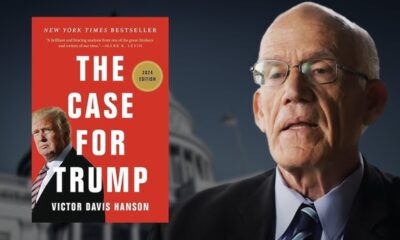
 Politics2 months ago
Politics2 months agoHistorian Victor Davis Hanson Talks on Trump’s Vision for a Safer America
-
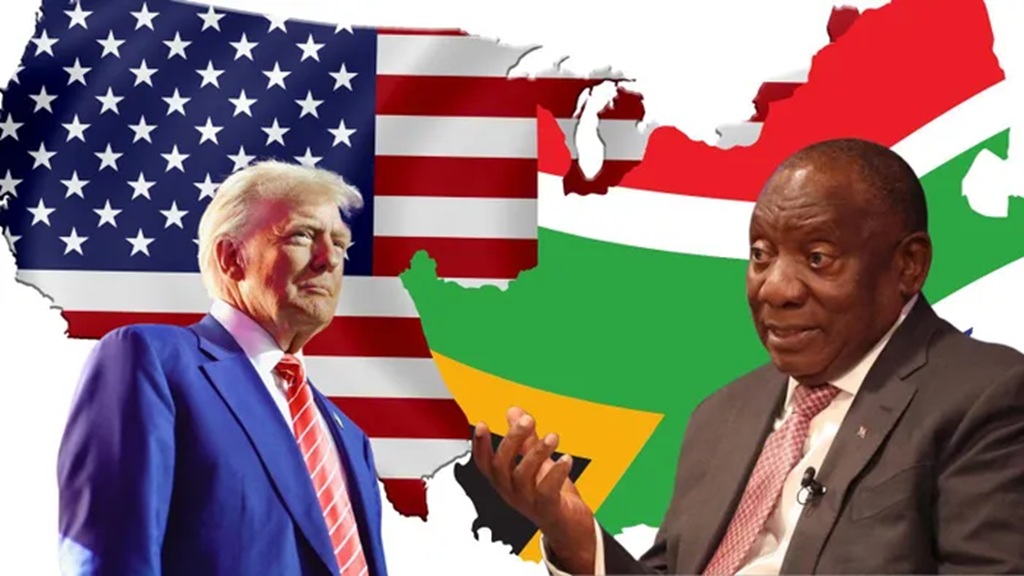
 News3 months ago
News3 months agoSouth Africa’s Audacious Bid to Teach America a Lesson
-

 Politics2 months ago
Politics2 months agoThe Democratic Party’s Leadership Vacuum Fuels Chaos and Exodus
-

 News2 months ago
News2 months agoThe Radical Left’s Courtship of Islam is a Road to Self-Defeat
-

 Politics2 months ago
Politics2 months agoDemocrats Fascist and Nazi Rhetoric Just Isn’t Resognating With Voters
-

 Politics2 months ago
Politics2 months agoChicago’s Mayor Puts Partisan Poison Over People’s Safety as Trump Troops Roll In
























